Backgrounder
Mirror of Time: Chinese Weddings Through the Decades
Changing wedding customs are the mirror of a rapidly changing China. Over the past 50 years, China has seen drastic changes in the process of getting married and how weddings are celebrated. What’s on Weibo gives an overview of Chinese weddings since the 1950s.
Published
8 years agoon
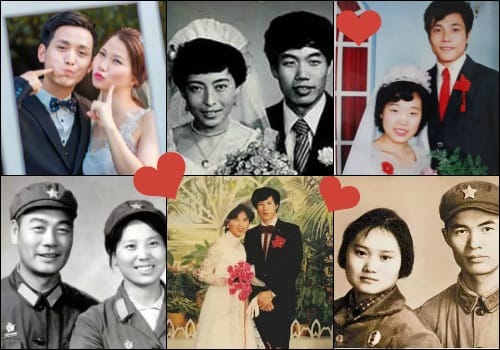
Changing wedding customs are the mirror of a rapidly changing China. Over the past 50 years, China has seen drastic changes in the process of getting married and how weddings are celebrated. What’s on Weibo gives an overview of Chinese weddings since the 1950s.
The staggering increase of bride prices in China’s rural areas has been a much-discussed topic in Chinese (social) media, as prices have increased sixty-fold (!) since the late 1990s.
But it is not just the custom of bride prices that has drastically changed over the past decades. In pace with a rapidly-changing China, the whole process of getting married and wedding traditions have undergone enormous changes.
Liu Tong (@丹东刘彤), deputy director of a Liaoning local TV channel, writes on Weibo: “In my parent’s generation, picking up the bride by bicycle was the equivalent of what the BMW car norm is now. After the establishment of a new China, the era of changes is reflected in the wedding transformations.”
Liu writes about what has characterized Chinese weddings through the ages, using a widespread Chinese phrase: “In the 1950s it was about having a bed, in the 1960s it was just about a bag of sweets, in the 1970s it was the Little Red Book, in the 1980s it was about having a radio, in the 1990s there was the extravagance of top-class hotels, and in the 2000s the wedding reception is a display of individuality”.*
Others on Weibo call China’s changing wedding traditions a “mirror of their time.”
Since China’s 1940s, the custom of wearing a white dress and making wedding photos had come into fashion (see image below).

Getting married in the 1940s: wearing a white dress had come into fashion (image via Ycwb).
But with the 1949 founding of the People’s Republic of China, wedding customs changed enormously within a relatively short time frame.
1950s: Plain and simple
In the 1950s, getting married was not much of a fuss, as China’s political situation and social revolution were deeply influencing people’s lives.
Getting a marriage certificate was enough to consider yourself married.

Wedding in Liaoning, China, in 1957 (image via Weibo and Wanhuajing).
An elder female resident from Hubei province named Mrs. Zhang tells Chinese media channel Cnchu.com that the weddings in those days were nothing comparable to what they are today: the marriage certificate was not much more than a paper with an official seal on it.
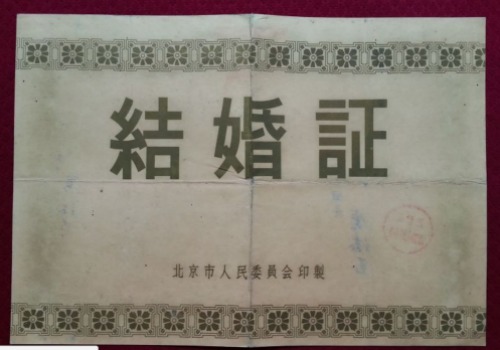
Wedding certificate from the 1950s.
People did not buy special clothes or gifts for the occasion: a simple gathering with some friends, neighbors, or family was enough.

Wedding portrait 1950s (via Weibo user @钦佩2013).

Liling county in Hunan Province, a couple registers their marriage with the local government on November 9, 1952 (image via Weibo and Women of China).
Mrs. Zhang says: “What left the deepest impression on me, was that I lived in a dorm for singles and had to go and collect my luggage and take it to my husband’s house to start my new life.”
“Although the wedding was very simple,” she says: “It was in fact very meaningful. We had the wedding certificate framed.”
1960s: Politics First
The 1960s wedding were similar to those in the 1950s in that they were quite simple, and that they would be celebrated with “just a few sweets and a plate of peanuts” (Liu 2013, 27). But with the launch of the Great Proletarian Cultural Revolution (1966-1976), the impact of the Communist Revolution on people’s everyday lives was pushed a step further.

The wedding photo of a couple during the 1960s. [photo via Women of China].
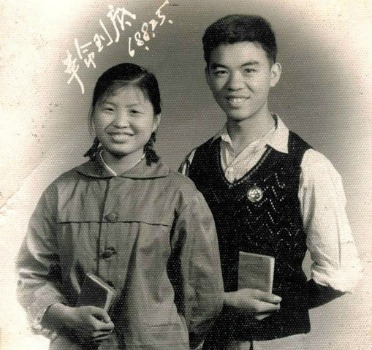
Wedding photo of China’s 1960s (image via Sina Blog).
The idea of free marriage, and marrying for love rather than material possessions, was something that had become the norm in most areas throughout China in the 1960s (Yu 1993, 110); the Marriage Law of the PRC was already introduced in 1950, and one its main principles was the free choice of partners.

Getting married in China’s 1960s (image via Weibo).
For a wedding, friends would gather for some peanuts, sweets, and tea, but there would not be big celebrations: people had to get up for work early the next morning, like any other day.
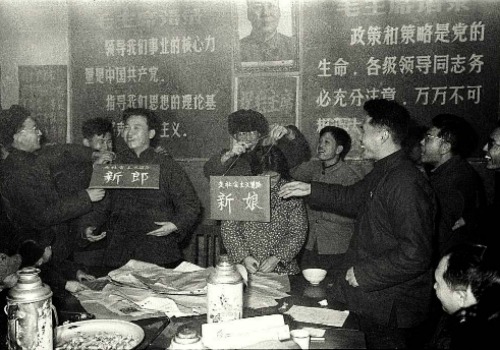
A marriage with tea and peanuts in 1968, Heilongjiang (via ifeng blog).
Journalist Li Zhensheng, who got married in 1968 at his work in the Heilongjiang Daily Newspaper’s office (see photo below), writes on iFeng Blog that it already cost one month’s wages (56 RMB/±8$)* to buy some candies, tea, and cigarettes. *(Please note that this is the present conversion rate and does not reflect the worth of 56 RMB in 1968).

PRC wedding certificate from 1968 (Image via ifeng blog).
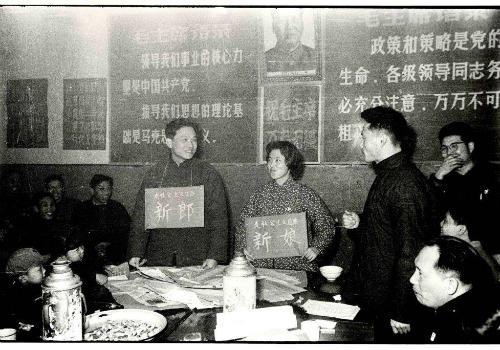
Li tells that together with their co-workers, the married couple sang some revolutionary songs. Their friends gave them some signs to hang on their necks as a sort of joke, saying: “The bride/groom taking the socialist way.”
1970s: The Three Most-Wanted Items
In the late 1970s, after the ending of the Cultural Revolution, getting married became more connected to material possessions and a dowry. The idea of having “the three essential items” (三大件) came into fashion upon getting married. These items were a watch, a bicycle, and a sewing machine. A radio was later also included (三转一响).
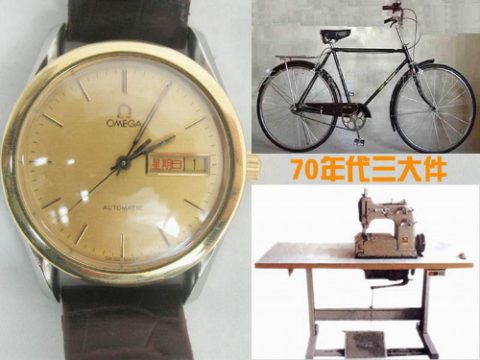
The “three big items” of the 1970s.
Although these items were generally the most desirable ones in the 1950s-1970s period, there were unattainable to many, as were things like leather shoes.
Household furniture was also becoming more important; newlyweds were expected to own at least one complete set of furniture (including a table, 4 chairs, a bed, a writing desk, a couch, a coffee table, besides cabinet, etc.)
Nevertheless, the wedding ceremony itself would still be relatively simple: there was a marriage certificate, the couple would face the portrait of Mao Zedong and have one witness, which would be enough.
One Weibo user from Beijing (@婷是我六六也是我) shared the wedding picture and certificate of her parents, who got married in this era (images below).

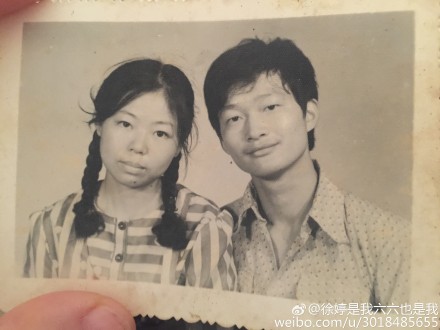
According to wedding service company Jieqinwang, the price of a wedding ceremony in those days would be around 700 RMB (±100 US$ presently), with around a 420 RMB (60 US$) for the ‘three main items’ (watch, bicycle, and sewing machine) (this China.org article points out people would need coupons to purchase these items).
The rest of the money could be used for clothes (180 RMB/26$), and a wedding meal for 10 people (100 RMB/14$).
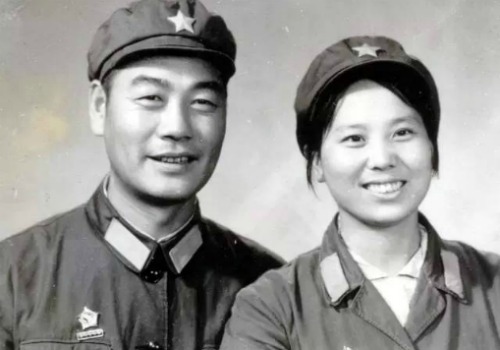
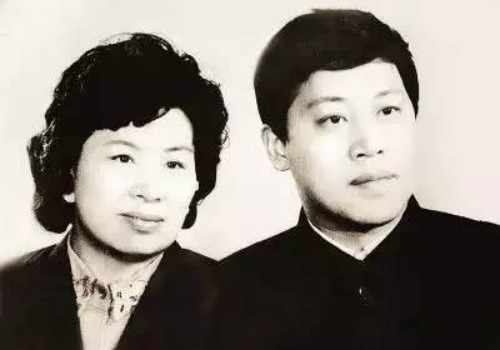
A 1970s wedding portrait in regular clothes, if people could afford it (via Jieqingwang).
Not all couples would be able to purchase new clothes, but if they could, they would. For many people, their wedding photo would be their first real portrait photo. Besides the photo in the Communist outfit, they would also have a photo in normal clothes.
1980s: Real Dress, Fake Flowers
After the end of the Mao era and the introduction of economic reforms by Deng Xiaoping, the 1980s showed some drastic changes to the previous decennia in wedding customs.
The general necessities for a marriage were now household electric appliances. Instead of items such as a watch, sewing machine, and bicycle, the new “three main items” were a television set, washing machine, and refrigerator – although not many people could actually afford them.
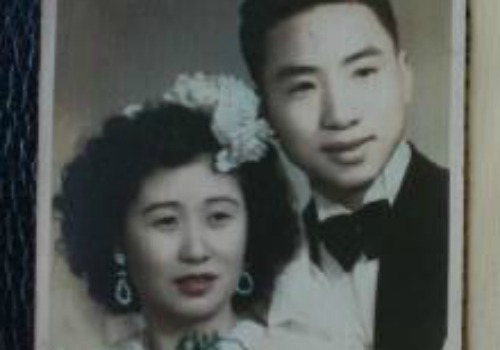
Chinese wedding portrait in 1980s (image via Weibo user @钦佩2013).
The custom of taking one’s vows in front of the Mao Zedong portrait was slowly disappearing, and weddings were becoming more formal again.

1980s wedding: the dress was real, the flowers were fake (image via Vision Times).
Those who could afford it would wear a Western-style dress and carry plastic flowers. Weddings would increasingly often take place outside the home, in hotels or restaurants.

The custom of picking up the bride with a group was also becoming more prevalent – she could sit on the back of the bike.
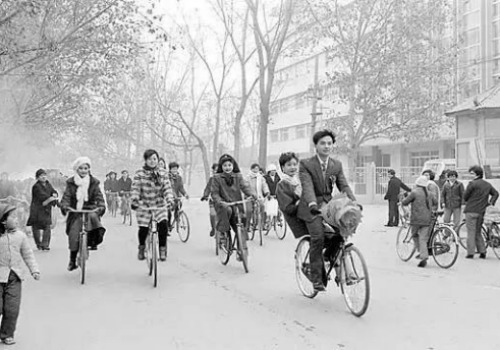
Picking up the bride per bike (image via Jieqinwang).
According to Jieqinwang and Phoenix News, the cost for a somewhat extravagant wedding in the 1980s would be around 3300 RMB (±480$), including the price for the “three items”, clothing, wedding pictures, and a wedding banquet for 10 people.
1990s: Higher Expectations
In the 1990s, the costs and expectations of wedding ceremonies became much higher than in the previous decades. The custom of making pre-wedding pictures came into fashion and the so-called bride prices or dowries came to play a more important role.

Pre-wedding photos in the 1990s (via Jianqinwang).
The day itself was also a much bigger event than in previous era’s. On the day of the wedding, the groom’s side would often rent a car to pick up the bride, and the wedding would often be celebrated in a hotel or restaurant.
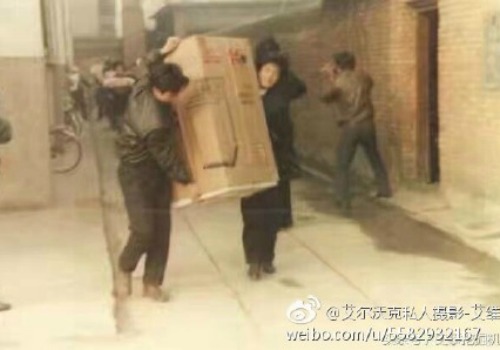
1990s wedding in more rural area: electric appliances played a major role (image via TJFer).
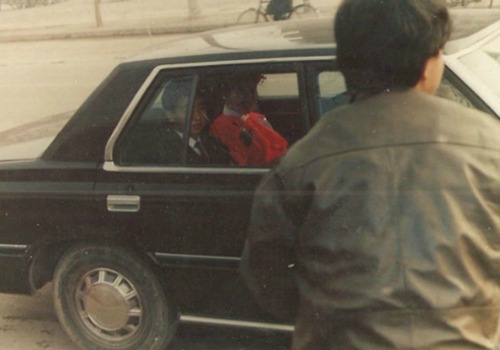
Newlyweds in their ride (rural, image via TJfer).

1990s wedding: newlyweds pay their respects to each other (rural, image via TJfer).
Owning a house also became to play a more important role, although this was financially impossible for many.
One Chinese man born in 1967 shares the story of his marriage day in 1995 with China.com, saying: “Getting married in the 1990s had become a lot more complicated and needed a lot of preparation, selecting the day, settling the dowry, seeing the new house (..), everything had to be prepared.”
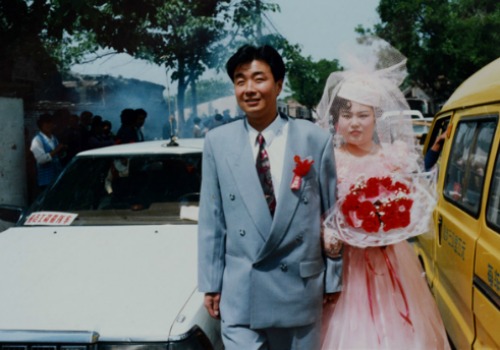
The average price of a wedding had become about ten times higher in the 1990s than in the 1980s. People would spend about 500 RMB (±75$) on taking wedding photos in a studio.
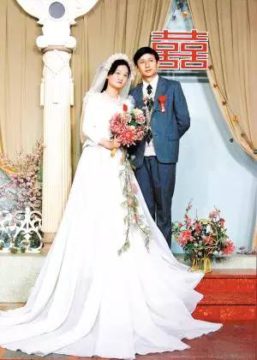
Taking pre-wedding studio photos became fashionable in the 1990s.
Other costs included the buying of the ‘must-have’ electrical appliances of the 1990s (motorbike, air-conditioning, video recorder), buying a wedding dress and the suit, renting a wedding car, and paying for a lavish wedding banquet for about 20 people.

Excluding the price of buying or renovating the house, this would still make the wedding price of around 33000 RMB (±4800-5000$, estimated by Jieqinwang).
2000s: Individuality & Extravagance
Since the 2000s, the organization and payment of weddings have become an increasingly heavy burden, especially for the groom’s family.
Although the custom of bride prices varies across China, it has come to play a more significant role in China’s countryside, where bride prices reached a new height due to the shortage of women of marriage age.
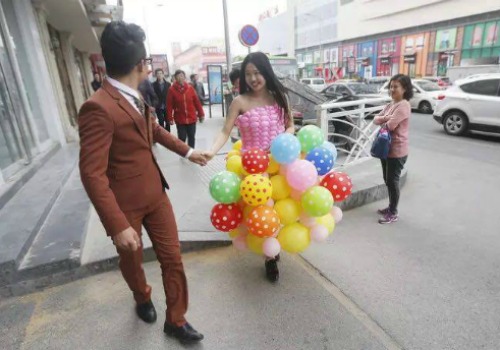
More original and individual style weddings have become popular since the 2000s.
Whereas the ‘three main items’ of the 1970s-1980s period were a sewing machine, bike, and a watch – later substituted with a washing machine, TV set, and fridge, and a motorbike, video recorder and air-conditioning – the magic words of the 2000s became ‘house’ and ‘car’ (买房买车); meaning that for a man to be considered eligible for marriage, they are usually expected to buy a house and own a car.

In the 21st century, Chinese weddings incorporate more Chinese traditional aspects (image via BBC).
Chinese weddings after 2000 are especially marked by their combination of traditional and western influences. Around 2003, a survey by People’s Daily revealed that an average newly married couple in Tianjin would spend around 191,000 RMB (±27,800$) on their wedding. This money would go towards the banquet, housing and furniture, wedding pictures, etc. (Liu 2013, 27).

Present-day wedding portrait, as shared on Weibo by Luce Artiz Studio (2017).
The pre-wedding photo sessions have now become an integral part of the Chinese wedding customs. As Cat Hanson wrote here previously, the perfect wedding shoot has actually become a top priority in Chinese wedding arrangements. Many couples even travel abroad for their pre-wedding photo session.
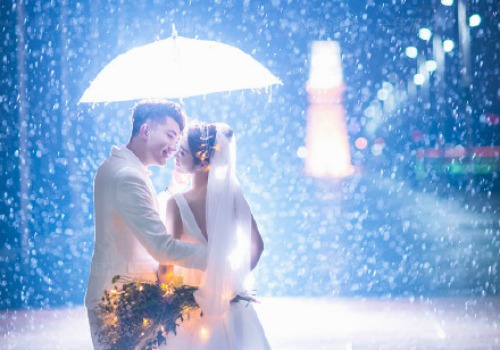
Wedding photo by Blue Bay Wedding Photo Studio on Weibo (@蔚蓝海岸旅游摄影集团).
On Chinese social media, wedding photography companies offer all-inclusive packages that promise couples 10 different outfits (including make-up and hair) in 10 different scenic scenes, including hotel stays and free drinks. The photo tradition has become a honeymoon of its own.
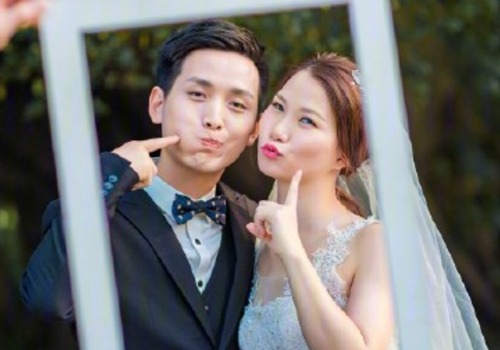
Those wedding photos now also show that besides all the lavishness, people also find it increasingly more important to stress individuality: from traditional clothes to western style dresses to unique creations, the majority of China’s early 21st century couples like to keep their weddings classy, original, and expensive.

Wedding in Sichuan, 2008 (photo by author).
– By Manya Koetse
Follow on Twitter or Like on Facebook
* loose translation of the sentence: “五十年代一张床,六十年代一包糖,七十年代红宝书,八十年代三转一响,九十年代星级宾馆讲排场,二十一世纪特色婚宴个性张扬.”
Sources & Further Reading
Chen Mingyuan 陈明远. 2010. “20世纪中国的结婚照 [20th Century Chinese Wedding Photos]” (In Chinese). Sina Blog, May 3 http://blog.sina.com.cn/s/blog_4bbb74a50100g4u7.html [20.2.17].
Cnchu.com. 2015. “50年代一张床 荆州社区居民话说那个年代的婚礼 [In the 1950s a Bed Was Enough – Jingzhou Community Residents Talk About the Weddings of The Time].” Cnchu, Oct 24 http://www.cnchu.com/viewnews-212816.html [19.2.17].
iFeng/Phoenix News. 2016. “父辈们的婚礼:自行车接新娘相当于现在宝马.” Phoenix News, Dec 16 http://share.iclient.ifeng.com/news/sharenews.f?aid=116557303&channelId=default&mid=&vt=5&srctag=cpz_sh_imtj_a [19.2.17].
Jieqingwang. “婚礼中婚纱最耀眼 盘点中国婚纱的变化” http://www.jieqinwang.com/article/detail/id/992
iFeng/Phoenix News. Special “Getting Married in the 1980s.” http://js.ifeng.com/special/80nd-hunli/#p1 [21.2.17].
Liu, Fengshu. 2013 (2011). “Social Transformation in China.” In Fengshu Liu, Urban Youth in China: Modernity, the Internet and the Self, 15-35. New York: Routledge.
Liu Qingmei 刘清梅. 2016. “六十年婚礼进行曲 [Sixty Years Wedding March].” Sina Blog, June 8 http://blog.sina.com.cn/s/blog_4e74289e0102x7y5.html [19.2.17].
Li Zhensheng 李振盛. 2010. “我在1968年的“文革”婚礼 [My ‘Revolutionary’ Wedding in 1968].” iFeng Blog, Dec 24 http://blog.ifeng.com/article/9306039.html [21.2.17].
Steinfeld, Jemimah. 2015. Little Emperors and Material Girls: Youth and Sex in Modern China. I.B.Tauris.
TJFER. 2016 “老照片:90年代农村结婚场面 [Old Photos: 1990s Weddings in the Countryside].” TJFER, 23 Nov http://www.tjfer.com/detail/g6356076561996906754/ [21.2.17].
Vision Times. 2011. “清末到80年代 百年婚纱照的演变 [From the End of the Qing to 1980s: The Development of 100 Years Marriage Pictures].” Vision Times, Dec 20 http://m.secretchina.com/news/gb/2011/12/20/433617.html.%E6%B8%85%E6%9C%AB%E5%88%B080%E5%B9%B4%E4%BB%A3%E3%80%80%E7%99%BE%E5%B9%B4%E5%A9%9A%E7%BA%B1%E7%85%A7%E7%9A%84%E6%BC%94%E5%8F%98(%E7%BB%84%E5%9B%BE).html [20.2.17].
Wanhuajing. “父辈们的婚礼:自行车接新娘相当于现在宝马 [The Weddings of Our Parents: Today’s BMW is the Bike that Picked Up the Bride Then]” Wanhuajing, Dec 29 http://m.wanhuajing.com/d673875 [19.2.17].
Women of China. 2009. “Changes in Chinese Weddings Over 60 Years.” Women of China, http://www.womenofchina.cn/womenofchina/html1/features/family/10/2641-1.htm [19.2.17].
Women of China. 2011. “‘Barometers’ of Fashion: Chinese Women’s Hairstyles Change; Reflect Altering Trends Over Past 60 Years.” Women of China, 14 Dec http://www.womenofchina.cn/womenofchina/html1/special/13/6006-1.htm [21.2.17].
YCWB. 2015. “婚礼中婚纱最耀眼 盘点中国婚纱的变化 [The Wedding Dress Is The Most Dazzling Part – Inventory of Chinese Wedding Changes].” YCWB, July 27 http://life.ycwb.com/2015-07/29/content_20473410.htm [19.2.17].
Yu, George T. 1993. China in Transition: Economic, Political, and Social Developments. Lanham: University Press of America.
©2017 Whatsonweibo. All rights reserved. Do not reproduce our content without permission – you can contact us at info@whatsonweibo.com
Manya is the founder and editor-in-chief of What's on Weibo, offering independent analysis of social trends, online media, and digital culture in China for over a decade. Subscribe to gain access to content, including the Weibo Watch newsletter, which provides deeper insights into the China trends that matter. More about Manya at manyakoetse.com or follow on X.

Backgrounder
“Oppenheimer” in China: Highlighting the Story of Qian Xuesen
Qian Xuesen is a renowned Chinese scientist whose life shares remarkable parallels with Oppenheimer’s.
Published
2 years agoon
September 16, 2023By
Zilan Qian
They shared the same campus, lived in the same era, and both played pivotal roles in shaping modern history while navigating the intricate interplay between science and politics. With the release of the “Oppenheimer” movie in China, the renowned Chinese scientist Qian Xuesen is being compared to the American J. Robert Oppenheimer.
In late August, the highly anticipated U.S. movie Oppenheimer finally premiered in China, shedding light on the life of the famous American theoretical physicist J. Robert Oppenheimer (1904-1967).
Besides igniting discussions about the life of this prominent scientist, the film has also reignited domestic media and public interest in Chinese scientists connected to Oppenheimer and nuclear physics.
There is one Chinese scientist whose life shares remarkable parallels with Oppenheimer’s. This is aerospace engineer and cyberneticist Qian Xuesen (钱学森, 1911-2009). Like Oppenheimer, he pursued his postgraduate studies overseas, taught at Caltech, and played a pivotal role during World War II for the US.
Qian Xuesen is so widely recognized in China that whenever I introduce myself there, I often clarify my last name by saying, “it’s the same Qian as Qian Xuesen’s,” to ensure that people get my name.
Some Chinese blogs recently compared the academic paths and scholarly contributions of the two scientists, while others highlighted the similarities in their political challenges, including the revocation of their security clearances.
The era of McCarthyism in the United States cast a shadow over Qian’s career, and, similar to Oppenheimer, he was branded as a “communist suspect.” Eventually, these political pressures forced him to return to China.
Although Qian’s return to China made his later life different from Oppenheimer’s, both scientists lived their lives navigating the complex dynamics between science and politics. Here, we provide a brief overview of the life and accomplishments of Qian Xuesen.
Departing: Going to America
Qian Xuesen (钱学森, also written as Hsue-Shen Tsien), often referred to as the “father of China’s missile and space program,” was born in Shanghai in 1911,1 a pivotal year marked by a historic revolution that brought an end to the imperial dynasty and gave rise to the Republic of China.
Much like Oppenheimer, who pursued further studies at Cambridge after completing his undergraduate education, Qian embarked on a journey to the United States following his bachelor’s studies at National Chiao Tung University (now Shanghai Jiao Tong University). He spent a year at Tsinghua University in preparation for his departure.
The year was 1935, during the eighth year of the Chinese Civil War and the fourth year of Japan’s invasion of China, setting the backdrop for his academic pursuits in a turbulent era.
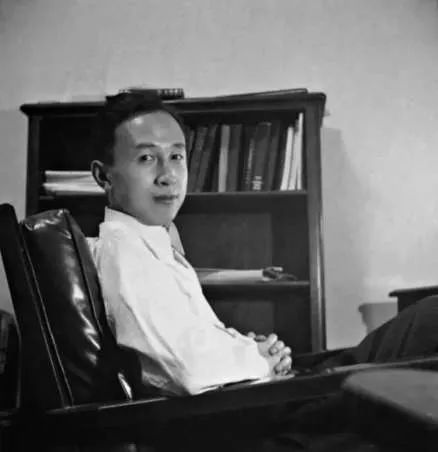
Qian in his office at Caltech (image source).
One year after arriving in the U.S., Qian earned his master’s degree in aeronautical engineering from the Massachusetts Institute of Technology (MIT). Three years later, in 1939, the 27-year-old Qian Xuesen completed his PhD at the California Institute of Technology (Caltech), the very institution where Oppenheimer had been welcomed in 1927. In 1943, Qian solidified his position in academia as an associate professor at Caltech. While at Caltech, Qian helped found NASA’s Jet Propulsion Laboratory.
When World War II began, while Oppenheimer was overseeing the Manhattan Project’s efforts to assist the U.S. in developing the atomic bomb, Qian actively supported the U.S. government. He served on the U.S. government’s Scientific Advisory Board and attained the rank of lieutenant colonel.

The first meeting of the US Department of the Air Force Scientific Advisory Board in 1946. The predecessor, the Scientific Advisory Group, was founded in 1944 to evaluate the aeronautical programs and facilities of the Axis powers of World War II. Qian can be seen standing in the back, the second on the left (image source).
After the war, Qian went to teach at MIT and returned to Caltech as a full-time professor in 1949. During that same year, Mao Zedong proclaimed the establishment of the People’s Republic of China (PRC). Just one year later, the newly-formed nation became involved in the Korean War, and China fought a bloody battle against the United States.
Red Scare: Being Labeled as a Communist
Robert Oppenheimer and Qian Xuesen both had an interest in Communism even prior to World War II, attending communist gatherings and showing sympathy towards the Communist cause.
Qian and Oppenheimer may have briefly met each other through their shared involvement in communist activities. During his time at Caltech, Qian secretly attended meetings with Frank Oppenheimer, the brother of J. Robert Oppenheimer (Monk 2013).
However, it was only after the war that their political leanings became a focal point for the FBI.
Just as the FBI accused Oppenheimer of being an agent of the Soviet Union, they quickly labeled Qian as a subversive communist, largely due to his Chinese heritage. While the government did not succeed in proving that Qian had communist ties with China during that period, they did ultimately succeed in portraying Qian as a communist affiliated with China a decade later.
During the transition from the 1940s to the 1950s, the Cold War was underway, and the anti-communist witch-hunts associated with the McCarthy era started to intensify (BBC 2020).
In 1950, the Korean War erupted, with the People’s Republic of China (PRC) joining North Korea in the conflict against South Korea, which received support from the United States. It was during this tumultuous period that the FBI officially accused Qian of communist sympathies in 1950, leading to the revocation of his security clearance despite objections from Qian’s colleagues. Four years later, in 1954, Robert Oppenheimer went through a similar process.
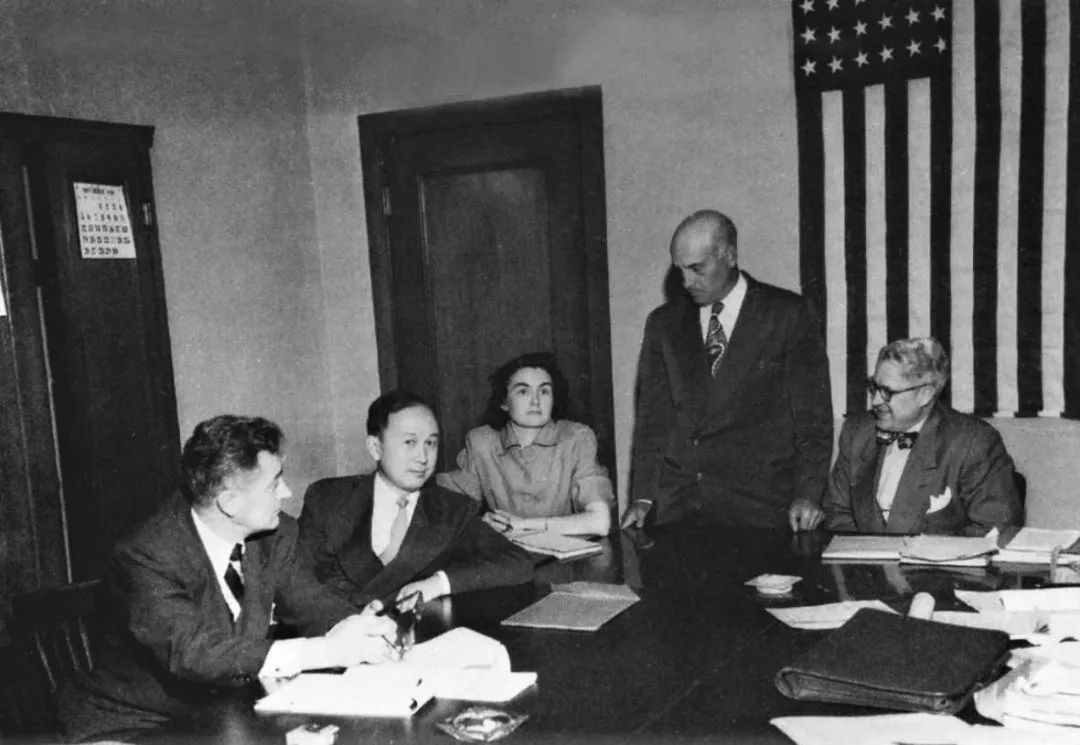
The 1950’s security hearing of Qian (second left). (Image source).
After losing his security clearance, Qian began to pack up, saying he wanted to visit his aging parents back home. Federal agents seized his luggage, which they claimed contained classified materials, and arrested him on suspicion of subversive activity. Although Qian denied any Communist leanings and rejected the accusation, he was detained by the government in California and spent the next five years under house arrest.
Five years later, in 1955, two years after the end of the Korean War, Qian was sent home to China as part of an apparent exchange for 11 American airmen who had been captured during the war. He told waiting reporters he “would never step foot in America again,” and he kept his promise (BBC 2020).
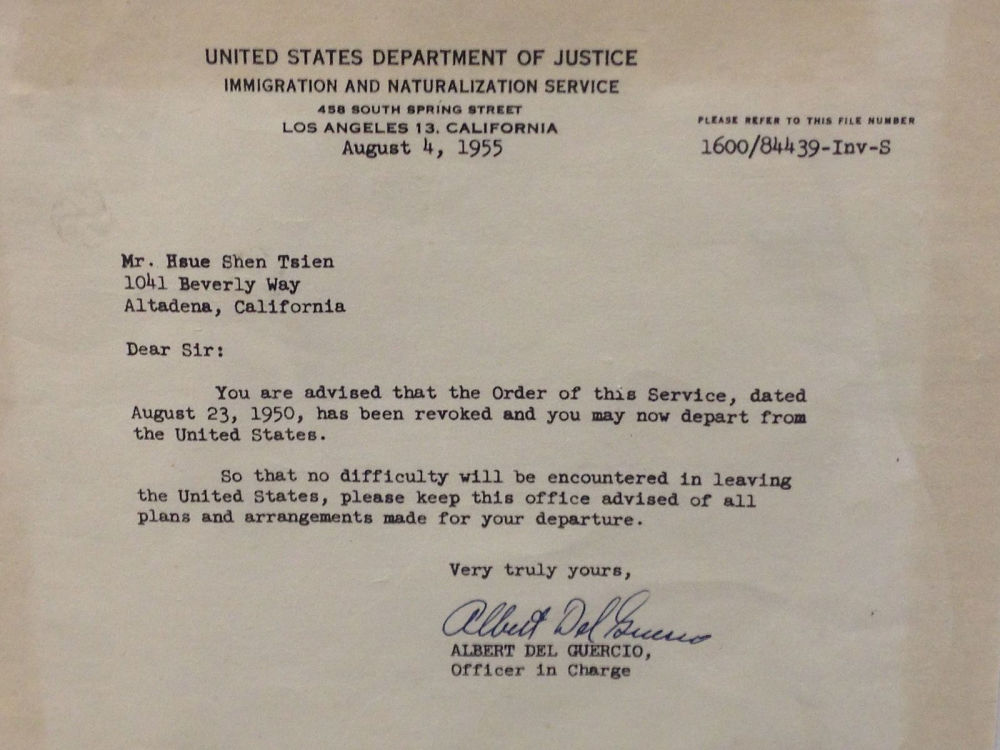
A letter from the US Immigration and Naturalization Service to Qian Xuesen, dated August 4, 1955, in which he was notified he was allowed to leave the US. The original copy is owned by Qian Xuesen Library of Shanghai Jiao Tong University, where the photo was taken. (Caption and image via wiki).
Dan Kimball, who was the Secretary of the US Navy at the time, expressed his regret about Qian’s departure, reportedly stating, “I’d rather shoot him dead than let him leave America. Wherever he goes, he equals five divisions.” He also stated: “It was the stupidest thing this country ever did. He was no more a communist than I was, and we forced him to go” (Perrett & Bradley, 2008).
Kimball may have foreseen the unfolding events accurately. After his return to China, Qian did indeed assume a pivotal role in enhancing China’s military capabilities, possibly surpassing the potency of five divisions. The missile programme that Qian helped develop in China resulted in weapons which were then fired back on America, including during the 1991 Gulf War (BBC 2020).
Returning: Becoming a National Hero
The China that Qian Xuesen had left behind was an entirely different China than the one he returned to. China, although having relatively few experts in the field, was embracing new possibilities and technologies related to rocketry and space exploration.
Within less than a month of his arrival, Qian was welcomed by the then Vice Prime Minister Chen Yi, and just four months later, he had the honor of meeting Chairman Mao himself.
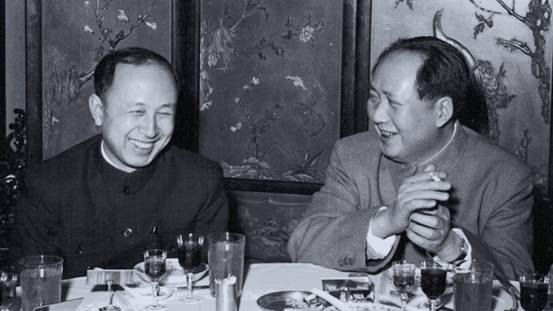
Qian and Mao (image source).
In China, Qian began a remarkably successful career in rocket science, with great support from the state. He not only assumed leadership but also earned the distinguished title of the “father” of the Chinese missile program, instrumental in equipping China with Dongfeng ballistic missiles, Silkworm anti-ship missiles, and Long March space rockets.
Additionally, his efforts laid the foundation for China’s contemporary surveillance system.
By now, Qian has become somewhat of a folk hero. His tale of returning to China despite being thwarted by the U.S. government has become like a legendary narrative in China: driven by unwavering patriotism, he willingly abandoned his overseas success, surmounted formidable challenges, and dedicated himself to his motherland.
Throughout his lifetime, Qian received numerous state medals in recognition of his work, establishing him as a nationally celebrated intellectual. From 1989 to 2001, the state-launched public movement “Learn from Qian Xuesen” was promoted throughout the country, and by 2001, when Qian turned 90, the national praise for him was on a similar level as that for Deng Xiaoping in the decade prior (Wang 2011).
Qian Xuesen remains a celebrated figure. On September 3rd of this year, a new “Qian Xuesen School” was established in Wenzhou, Zhejiang Province, becoming the sixth high school bearing the scientist’s name since the founding of the first one only a year ago.
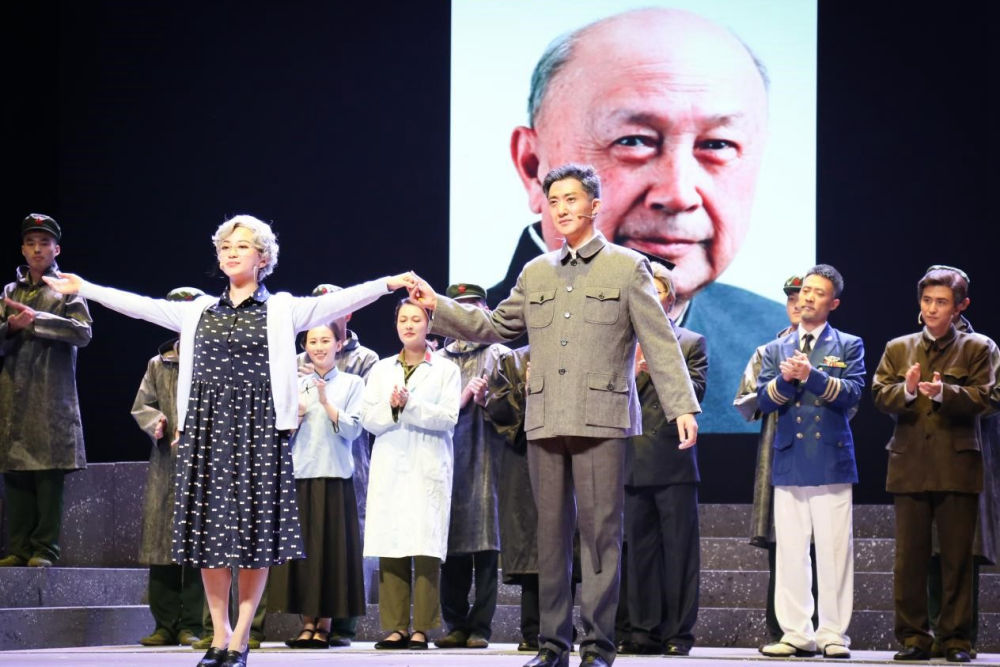
In 2017, the play “Qian Xuesen” was performed at Qian’s alma mater, Shanghai Jiaotong University. (Image source.)
Qian Xuesen’s legacy extends well beyond educational institutions. His name frequently appears in the media, including online articles, books, and other publications. There is the Qian Xuesen Library and a museum in Shanghai, containing over 70,000 artefacts related to him. Qian’s life story has also been the inspiration for a theater production and a 2012 movie titled Hsue-Shen Tsien (钱学森).2
Unanswered Questions
As is often the case when people are turned into heroes, some part of the stories are left behind while others are highlighted. This holds true for both Robert Oppenheimer and Qian Xuesen.
The Communist Party of China hailed Qian as a folk hero, aligning with their vision of a strong, patriotic nation. Many Chinese narratives avoid the debate over whether Qian’s return was linked to problems and accusations in the U.S., rather than genuine loyalty to his homeland.
In contrast, some international media have depicted Qian as a “political opportunist” who returned to China due to disillusionment with the U.S., also highlighting his criticism of “revisionist” colleagues during the Cultural Revolution and his denunciation of the 1989 student demonstrations.
Unlike the image of a resolute loyalist favored by the Chinese public, Qian’s political ideology was, in fact, not consistently aligned, and there were instances where he may have prioritized opportunity over loyalty at different stages of his life.
Qian also did not necessarily aspire to be a “flawless hero.” Upon returning to China, he declined all offers to have his biography written for him and refrained from sharing personal information with the media. Consequently, very little is known about his personal life, leaving many questions about the motivations driving him, and his true political inclinations.
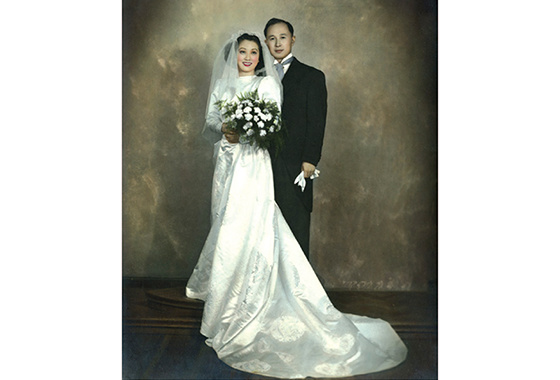
The marriage photo of Qian and Jiang. (Image source).
We do know that Qian’s wife, Jiang Ying (蒋英), had a remarkable background. She was of Chinese-Japanese mixed race and was the daughter of a prominent military strategist associated with Chiang Kai-shek. Jiang Ying was also an accomplished opera singer and later became a professor of music and opera at the Central Conservatory of Music in Beijing.
Just as with Qian, there remain numerous unanswered questions surrounding Oppenheimer, including the extent of his communist sympathies and whether these sympathies indirectly assisted the Soviet Union during the Cold War.
Perhaps both scientists never imagined they would face these questions when they first decided to study physics. After all, they were scientists, not the heroes that some narratives portray them to be.
Also read:
■ Farewell to a Self-Taught Master: Remembering China’s Colorful, Bold, and Iconic Artist Huang Yongyu
■ “His Name Was Mao Anying”: Renewed Remembrance of Mao Zedong’s Son on Chinese Social Media
By Zilan Qian
Follow @whatsonweibo
1 Some sources claim that Qian was born in Hangzhou, while others say he was born in Shanghai with ancestral roots in Hangzhou.
2The Chinese character 钱 is typically romanized as “Qian” in Pinyin. However, “Tsien” is a romanization in Wu Chinese, which corresponds to the dialect spoken in the region where Qian Xuesen and his family have ancestral roots.
This article has been edited for clarity by Manya Koetse
References (other sources hyperlinked in text)
BBC. 2020. “Qian Xuesen: The man the US deported – who then helped China into space.” BBC.com, 27 October https://www.bbc.com/news/stories-54695598 [9.16.23].
Monk, Ray. 2013. Robert Oppenheimer: A Life inside the Center, First American Edition. New York: Doubleday.
Perrett, Bradley, and James R. Asker. 2008. “Person of the Year: Qian Xuesen.” Aviation Week and Space Technology 168 (1): 57-61.
Wang, Ning. 2011. “The Making of an Intellectual Hero: Chinese Narratives of Qian Xuesen.” The China Quarterly, 206, 352-371. doi:10.1017/S0305741011000300
Get the story behind the hashtag. Subscribe to What’s on Weibo here to receive our newsletter and get access to our latest articles:
Spotted a mistake or want to add something? Please let us know in comments below or email us. First-time commenters, please be patient – we will have to manually approve your comment before it appears.
©2023 Whatsonweibo. All rights reserved. Do not reproduce our content without permission – you can contact us at info@whatsonweibo.com.
Backgrounder
Farewell to a Self-Taught Master: Remembering China’s Colorful, Bold, and Iconic Artist Huang Yongyu
Renowned Chinese artist and the creator of the ‘Blue Rabbit’ zodiac stamp Huang Yongyu has passed away at the age of 98. “I’m not afraid to die. If I’m dead, you may tickle me and see if I smile.”
Published
2 years agoon
June 15, 2023
The famous Chinese painter, satirical poet, and cartoonist Huang Yongyu has passed away. Born in 1924, Huang endured war and hardship, yet never lost his zest for life. When his creativity was hindered and his work was suppressed during politically tumultuous times, he remained resilient and increased “the fun of living” by making his world more colorful.
He was a youthful optimist at old age, and will now be remembered as an immortal legend. The renowned Chinese painter and stamp designer Huang Yongyu (黄永玉) passed away on June 13 at the age of 98. His departure garnered significant attention on Chinese social media platforms this week.
On Weibo, the hashtag “Huang Yongyu Passed Away” (#黄永玉逝世#) received over 160 million views by Wednesday evening.
Huang was a member of the China National Academy of Painting (中国国家画院) as well as a Professor at the Central Academy of Fine Arts (中央美术学院).
Huang Yongyu is widely recognized in China for his notable contribution to stamp design, particularly for his iconic creation of the monkey stamp in 1980. Although he designed a second monkey stamp in 2016, the 1980 stamp holds significant historical importance as it marked the commencement of China Post’s annual tradition of releasing zodiac stamps, which have since become highly regarded and collectible items.

Huang’s famous money stamp that was issued by China Post in 1980.
The monkey stamp designed by Huang Yongyu has become a cherished collector’s item, even outside of China. On online marketplaces like eBay, individual stamps from this series are being sold for approximately $2000 these days.
Huang Yongyu’s latest most famous stamp was this year’s China Post zodiac stamp. The stamp, a blue rabbit with red eyes, caused some online commotion as many people thought it looked “horrific.”
Some thought the red-eyed blue rabbit looked like a rat. Others thought it looked “evil” or “monster-like.” There were also those who wondered if the blue rabbit looked so wild because it just caught Covid.
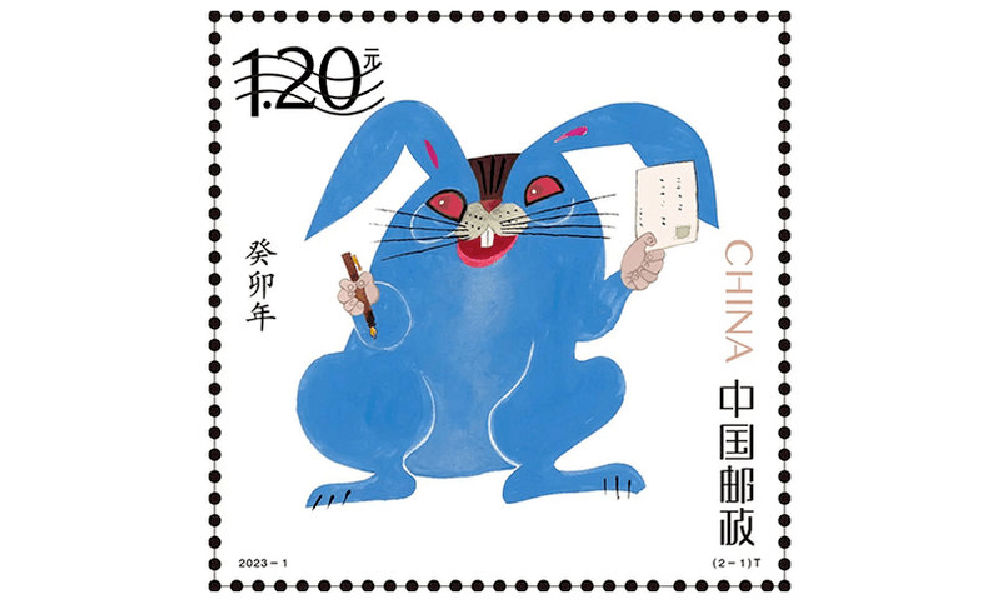
Huang’s (in)famous blue rabbit stamp.
Nevertheless, many people lined up at post offices for the stamps and they immediately sold out.
In light of the controversy, Huang Yongyu spoke about the stamps in a livestream in January of 2023. The 98-year-old artist claimed he had simply drawn the rabbit to spread joy and celebrate the new year, stating, “Painting a rabbit stamp is a happy thing. Everyone could draw my rabbit. It’s not like I’m the only one who can draw this.”
Huang’s response also went viral, with one Weibo hashtag dedicated to the topic receiving over 12 million views (#蓝兔邮票设计者直播回应争议#) at the time. Those defending Huang emphasized how it was precisely his playful, light, and unique approach to art that has made Huang’s work so famous.
A Self-Made Artist
“I’m ugly, but my mum likes me”
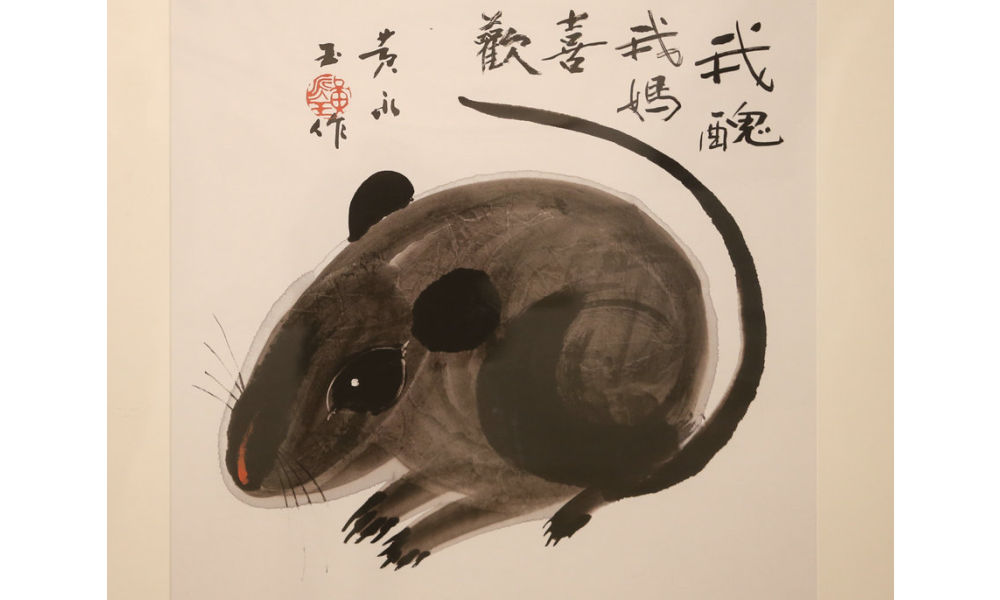
‘Ugly Mouse’ by Huang Yongyu [Image via China Daily].
Huang Yongyu was born on August 9, 1924, in Hunan’s Chengde as a native of the Tujia ethnic group.
He was born into an extraordinary family. His grandfather, Huang Jingming (黄镜铭), worked for Xiong Xiling (熊希齡), who would become the Premier of the Republic of China. His first cousin and lifelong friend was the famous Chinese novelist Shen Congwen (沈从文). Huang’s father studied music and art and was good at drawing and playing the accordion. His mother graduated from the Second Provincial Normal School and was the first woman in her county to cut her hair short and wear a short skirt (CCTV).
Born in times of unrest and poverty, Huang never went to college and was sent away to live with relatives at the age of 13. His father would die shortly after, depriving him of a final goodbye. Huang started working in various places and regions, from porcelain workshops in Dehua to artisans’ spaces in Quanzhou. At the age of 16, Huang was already earning a living as a painter and woodcutter, showcasing his talents and setting the foundation for his future artistic pursuits.
When he was 22, Huang married his first girlfriend Zhang Meixi (张梅溪), a general’s daughter, with whom he shared a love for animals. He confessed his love for her when they both found themselves in a bomb shelter after an air-raid alarm.

Huang and Zhang Meixi [163.com]
In his twenties, Huang Yongyu emerged as a sought-after artist in Hong Kong, where he had relocated in 1948 to evade persecution for his left-wing activities. Despite achieving success there, he heeded Shen Congwen’s advice in 1953 and moved to Beijing. Accompanied by his wife and their 7-month-old child, Huang took on a teaching position at the esteemed Central Academy of Fine Arts (中央美术学院).
The couple raised all kinds of animals at their Beijing home, from dogs and owls to turkeys and sika deers, and even monkeys and bears (Baike).
Throughout Huang’s career, animals played a significant role, not only reflecting his youthful spirit but also serving as vehicles for conveying satirical messages.
One recurring motif in his artwork was the incorporation of mice. In one of his famous works, a grey mouse is accompanied by the phrase ‘I’m ugly, but my mum likes me’ (‘我丑,但我妈喜欢’), reinforcing the notion that regardless of our outward appearance or circumstances, we remain beloved children in the eyes of our mothers.
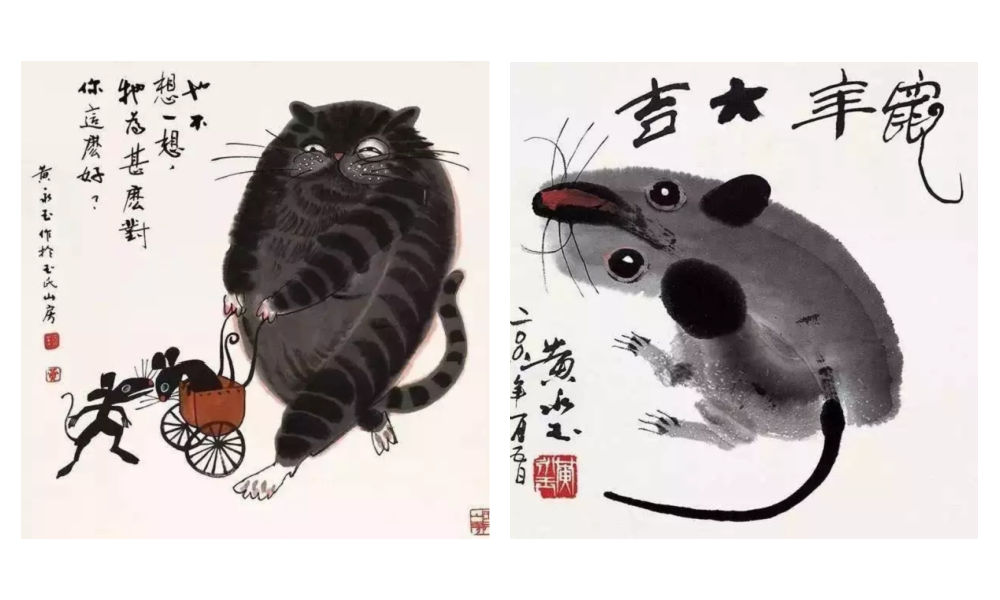
As a teacher, Huang liked to keep his lessons open-minded and he, who refused to join the Party himself, stressed the importance of art over politics. He would hold “no shirt parties” in which his all-male studio students would paint in an atmosphere of openness and camaraderie during hot summer nights (Andrews 1994, 221; Hawks 2017, 99).
By 1962, creativity in the classroom was limited and there were far more restrictions to what could and could not be created, said, and taught.
Bright Colors in Dark Times
“Strengthen my resolve and increase the fun of living”

Huang Yongyu’s winking owl, 1973, via Wikiart.
In 1963, Huang was sent to the countryside as part of the “Four Cleanups” movement (四清运动, 1963-1966). Although Huang cooperated with the requirement to attend political meetings and do farm work, he distanced himself from attempts to reform his thinking. In his own time, and even during political meetings, he would continue to compose satirical and humorous pictures and captions centered around animals, which would later turn into his ‘A Can of Worms’ series (Hawks 2017, 99; see Morningsun.org).
Three years later, at the beginning of the Cultural Revolution, many Chinese major artists, including Huang, were detained in makeshift jails called ‘niupeng‘ (牛棚), cowsheds. Huang’s work was declared to be counter-revolutionary, and he was denounced and severely beaten. Despite the difficult circumstances, Huang’s humor and kindness would remind his fellow artist prisoners of the joy of daily living (2017, 95-96).
After his release, Huang and his family were relocated to a cramped room on the outskirts of Beijing. The authorities, thinking they could thwart his artistic pursuits, provided him with a shed that had only one window, which faced a neighbor’s wall. However, this limitation didn’t deter Huang. Instead, he ingeniously utilized vibrant pigments that shone brightly even in the dimly lit space.
During this time, he also decided to make himself an “extra window” by creating an oil painting titled “Eternal Window” (永远的窗户). Huang later explained that the flower blossoms in the paining were also intended to “strengthen my resolve and increase the fun of living” (Hawks 2017, 4; 100-101).
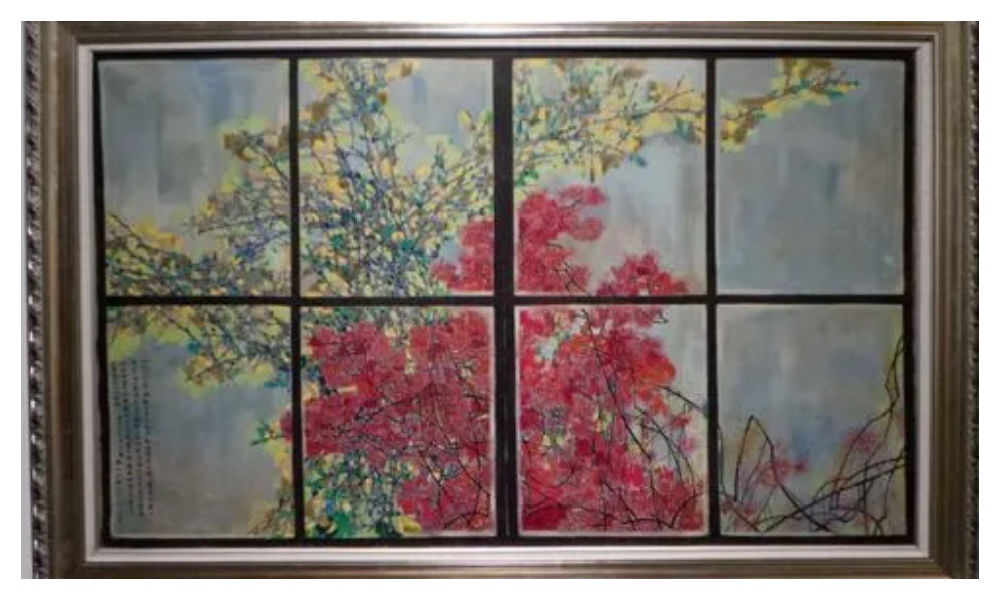
Huang Yongyu’s Eternal Window [Baidu].
In 1973, during the peak of the Cultural Revolution, Huang painted his famous winking owl. The calligraphy next to the owl reads: “During the day people curse me with vile words, but at night I work for them” (“白天人们用恶毒的语言诅咒我,夜晚我为他们工作”) (Matthysen 2021, 165).
The painting was seen as a display of animosity towards the regime, and Huang got in trouble for it. Later on in his career, however, Huang would continue to paint owls. In 1977, when the Cultural Revolution had ended, Huang Yongyu painted other owls to ridicules his former critics (2021, 174).

According to art scholar Shelly Drake Hawks, Huang Yongyu employed animals in his artwork to satirize the realities of life under socialism. This approach can be loosely compared to George Orwell’s famous novel Animal Farm.
However, Huang’s artistic style, vibrant personal life, and boundary-pushing work ethic also draw parallels to Picasso. Like Picasso, Huang embraced a colorful life, adopted an innovative approach to art, and challenged artistic norms.
An Optimist Despite All Hardships
“Quickly come praise me, while I’m still alive”

Huang Yongyu will be remembered in China with love and affection for numerous reasons. Whether it is his distinctive artwork, his mischievous smile and trademark pipe, his unwavering determination to follow his own path despite the authorities’ expectations, or his enduring love for his wife of over 75 years, there are countless aspects to appreciate and admire about Huang.
One things that is certainly admirable is how he was able to maintain a youthful and joyful attitude after suffering many hardships and losing so many friends.
“An intriguing soul. Too wonderful to describe,” one Weibo commenter wrote about Huang, sharing pictures of Huang Yongyu’s “Scenes of Pooping” (出恭图) work.

Old age did not hold him back. At the age of 70, his paintings sold for millions. When he was in his eighties, he was featured on the cover of Esquire (时尚先生) magazine.
At the age of 82, he stirred controversy in Hong Kong with his “Adam and Eve” sculpture featuring male and female genitalia, leading to complaints from some viewers. When confronted with the backlash, Huang answered, “I just wanted to have a taste of being sued, and see how the government would react” (Ora Ora).
I'm guessing the 98-year-old Huang loved the controversy. When confronted with backlash for his sculpture featuring male and female genitalia in 2007 Hong Kong, Huang answered, "I just wanted to have a taste of being sued, and see how the government would react." pic.twitter.com/kG0MVVM4SN
— Manya Koetse (@manyapan) June 15, 2023
In his nineties, he started driving a Ferrari. He owned mansions in his hometown in Hunan, in Beijing, in Hong Kong, and in Italy – all designed by himself (Chen 2019).
Huang kept working and creating until the end of his life. “It’s good to work diligently. Your work may be meaningful. Maybe it won’t be. Don’t insist on life being particularly meaningful. If it’s happy and interesting, then that’s great enough.”
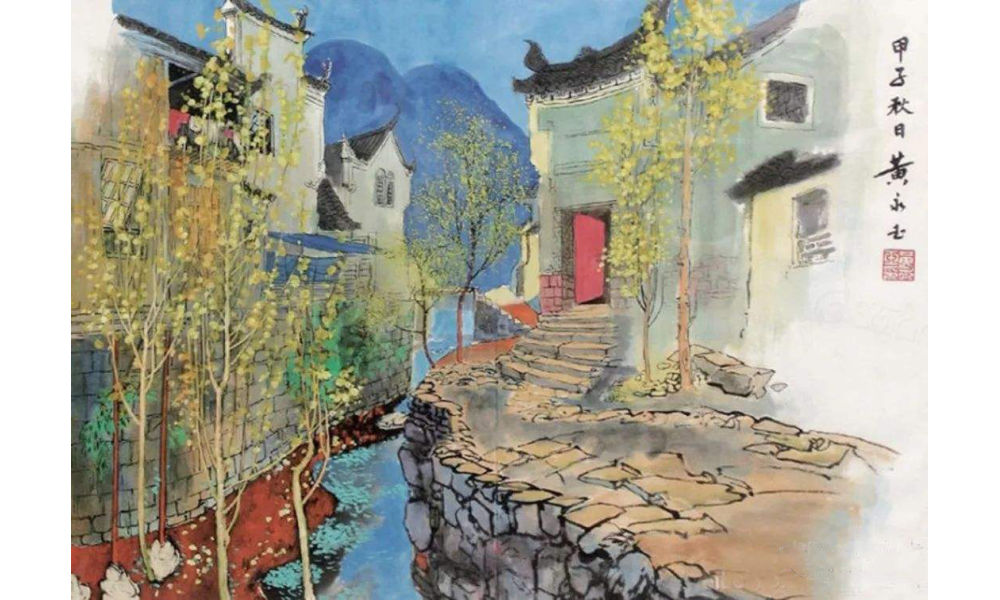
“Hometown Scenery” or rather “Hunan Scenery” (湘西风景) by Huang.
Huang did not dread the end of his life.
“My old friends have all died, I’m the only one left,” he said at the age of 95. He wrote his will early and decided he wanted a memorial service for himself before his final departure. “Quickly come praise me, while I’m still alive,” he said, envisioning himself reclining on a chair in the center of the room, “listening to how everyone applauds me” (CCTV, Sohu).
He stated: “I don’t fear death at all. I always joke that when I die, you should tickle me first and see if I’ll smile” (“对死我是一点也不畏惧,我开玩笑,我等死了之后先胳肢我一下,看我笑不笑”).
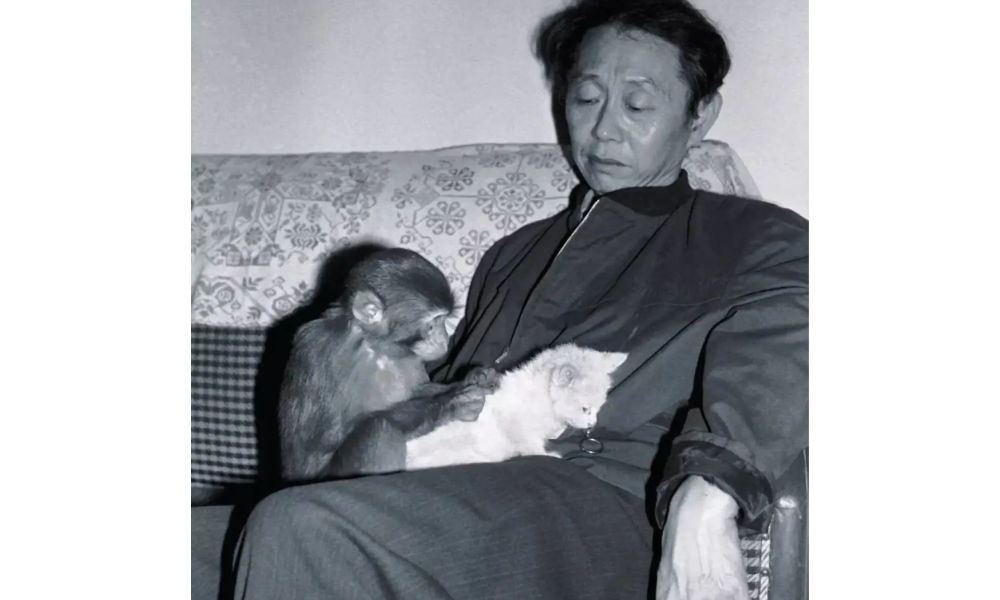
Huang with Yiwo (伊喔), the original model for the monkey stamp [Shanghai Observer].
Huang also was not sentimental about what should happen to his ashes. In a 2019 article in Guangming Daily, it was revealed that he suggested to his wife the idea of pouring his ashes into the toilet and flushing them away with the water.
However, his wife playfully retorted, saying, “No, that won’t do. Your life has been too challenging; you would clog the toilet.”
To this, Huang responded, “Then wrap my ashes into dumplings and let everyone [at the funeral] eat them, so you can tell them, ‘You’ve consumed Huang Yongyu’s ashes!'”
But she also opposed of that idea, saying that they would vomit and curse him forever.
Nevertheless, his wife expressed opposition to this idea, citing concerns that it would cause people to vomit and curse him indefinitely.
In response, Huang declared, “Then let’s forget about my ashes. If you miss me after I’m gone, just look up at the sky and the clouds.” Eventually, his wife would pass away before him, in 2020, at the age of 98, having spent 77 years together with Huang.
Huang will surely be missed. Not just by the loved ones he leaves behind, but also by millions of his fans and admirers in China and beyond.
“We will cherish your memory, Mr. Huang,” one Weibo blogger wrote. Others honor Huang by sharing some of his famous quotes, such as, “Sincerity is more important than skill, which is why birds will always sing better than humans” (“真挚比技巧重要,所以鸟总比人唱得好”).
Among thousands of other comments, another social media user bid farewell to Huang Yongyu: “Our fascinating Master has transcended. He is now a fascinating soul. We will fondly remember you.”
By Manya Koetse
Get the story behind the hashtag. Subscribe to What’s on Weibo here to receive our newsletter and get access to our latest articles:
References
Andrews, Julia Frances. 1994. Painters and Politics in the People’s Republic of China, 1949-1979. Berkley: University of California Press.
Baike. “Huang Yongyu 黄永玉.” Baidu Baike https://baike.baidu.com/item/%E9%BB%84%E6%B0%B8%E7%8E%89/1501951 [June 14, 2023].
CCTV. 2023. “Why Everyone Loves Huang Yongyu [为什么人人都爱黄永玉].” WeChat 央视网 June 14.
Chen Hongbiao 陈洪标. 2019. “Most Spicy Artist: Featured in a Magazine at 80, Flirting with Lin Qingxia at 91, Playing with Cars at 95, Wants Memorial Service While Still Alive [最骚画家:80岁上杂志,91岁撩林青霞,95岁玩车,活着想开追悼会].” Sohu/Guangming Daily March 16: https://www.sohu.com/a/301686701_819105 [June 15, 2023].
Hawks, Shelley Drake. 2017. The Art of Resistance Painting by Candlelight in Mao’s China. Seattle: University of Washington Press.
Matthysen, Mieke. 2021. Ignorance is Bliss: The Chinese Art of Not Knowing. Palgrave Macmillan.
Ora Ora. “HUANG YONGYU 黃永玉.” Ora Ora https://www.ora-ora.com/artists/103-huang-yongyu/ [June 15, 2023].
Spotted a mistake or want to add something? Please let us know in comments below or email us. First-time commenters, please be patient – we will have to manually approve your comment before it appears.
©2023 Whatsonweibo. All rights reserved. Do not reproduce our content without permission – you can contact us at info@whatsonweibo.com.
Subscribe

Beauty Influencer Du Meizhu Accused of Scamming Fan Out of $27K

Inside the Labubu Craze and the Globalization of Chinese Designer Toys

Lured with “Free Trip”: 8 Taiwanese Tourists Trafficked to Myanmar Scam Centers

10 Viral Chinese Phrases You Didn’t Know Came From Video Games

Earring Gate: Huang Yangdiantian and the 2.3 Million RMB Emerald Earrings

China Is Not Censoring Its Social Media to Please the West

IShowSpeed in China: Streaming China’s Stories Well

Inside the Labubu Craze and the Globalization of Chinese Designer Toys

China Reacts: 3 Trending Hashtags Shaping the Tariff War Narrative

China Trending Week 15/16: Gu Ming Viral Collab, Maozi & Meigui Fallout, Datong Post-Engagement Rape Case

Chinese New Nickname for Trump Mixes Fairy Tales with Tariff War

Squat or Sit? China’s Great Toilet Debate and the Problem of Footprints on the Seat

Strange Encounter During IShowSpeed’s Chengdu Livestream

No Quiet Qingming: From High-Tech Tomb-Sweeping to IShowSpeed & the Seven China Streams

Understanding the Dr. Xiao Medical Scandal
Get in touch
Would you like to become a contributor, or do you have any tips or suggestions? Get in touch here!
Popular Reads
-

 China Media12 months ago
China Media12 months agoA Triumph for “Comrade Trump”: Chinese Social Media Reactions to Trump Rally Shooting
-

 China Society9 months ago
China Society9 months agoDeath of Chinese Female Motorcycle Influencer ‘Shigao ProMax’ Sparks Debate on Risky Rides for Online Attention
-

 China Memes & Viral12 months ago
China Memes & Viral12 months agoThe “City bu City” (City不City) Meme Takes Chinese Internet by Storm
-

 China World11 months ago
China World11 months agoChina at Paris 2024 Olympics Trend File: Medals and Moments on Chinese Social Media





